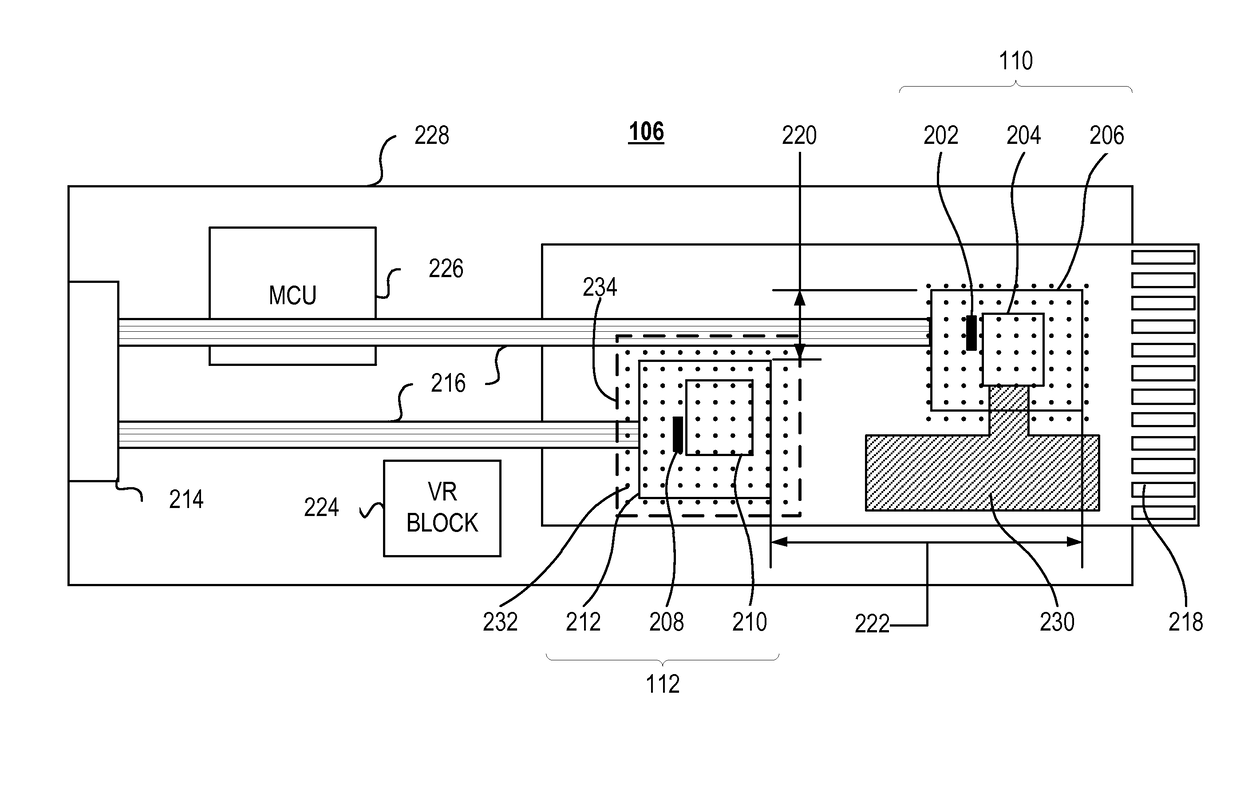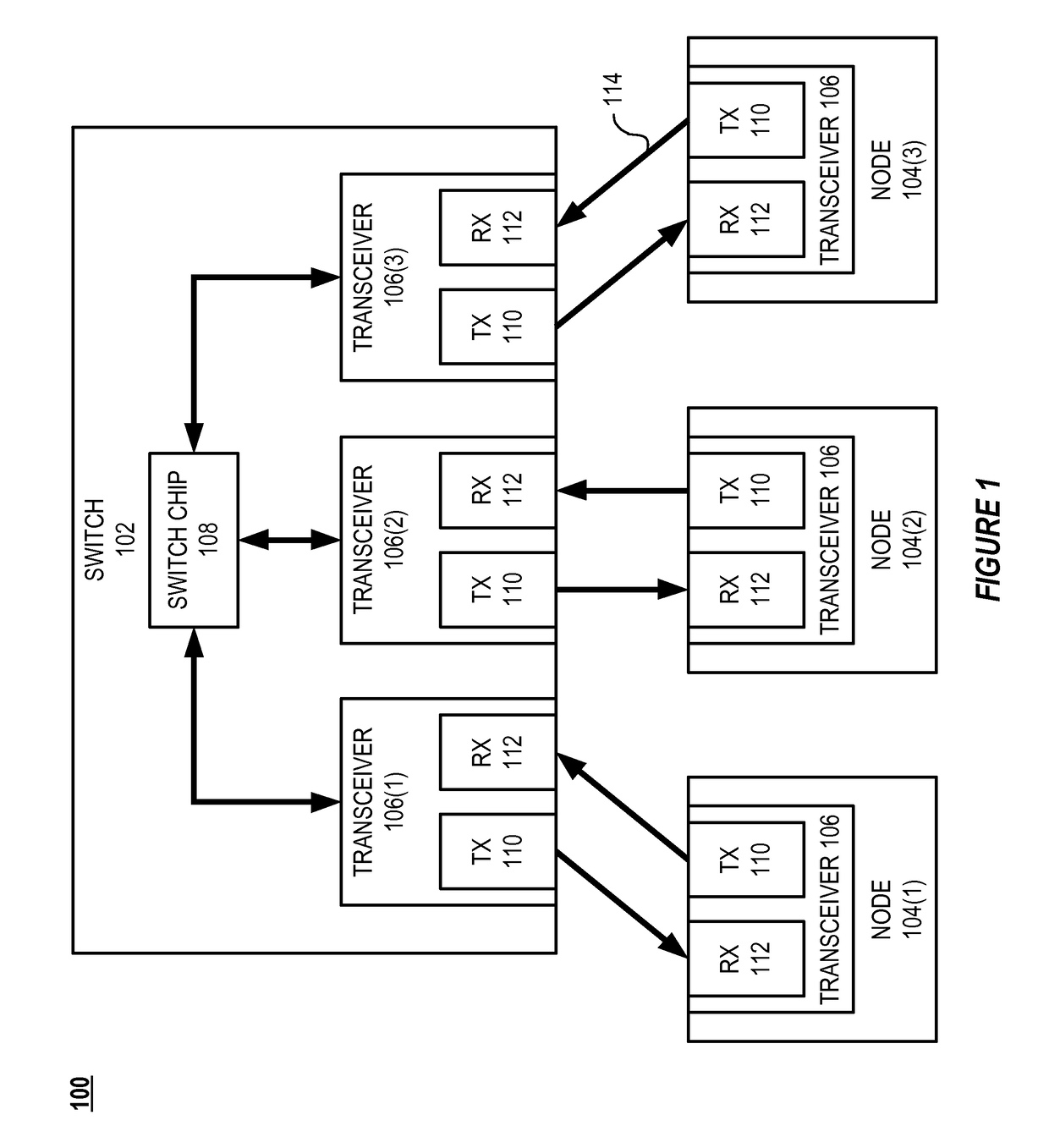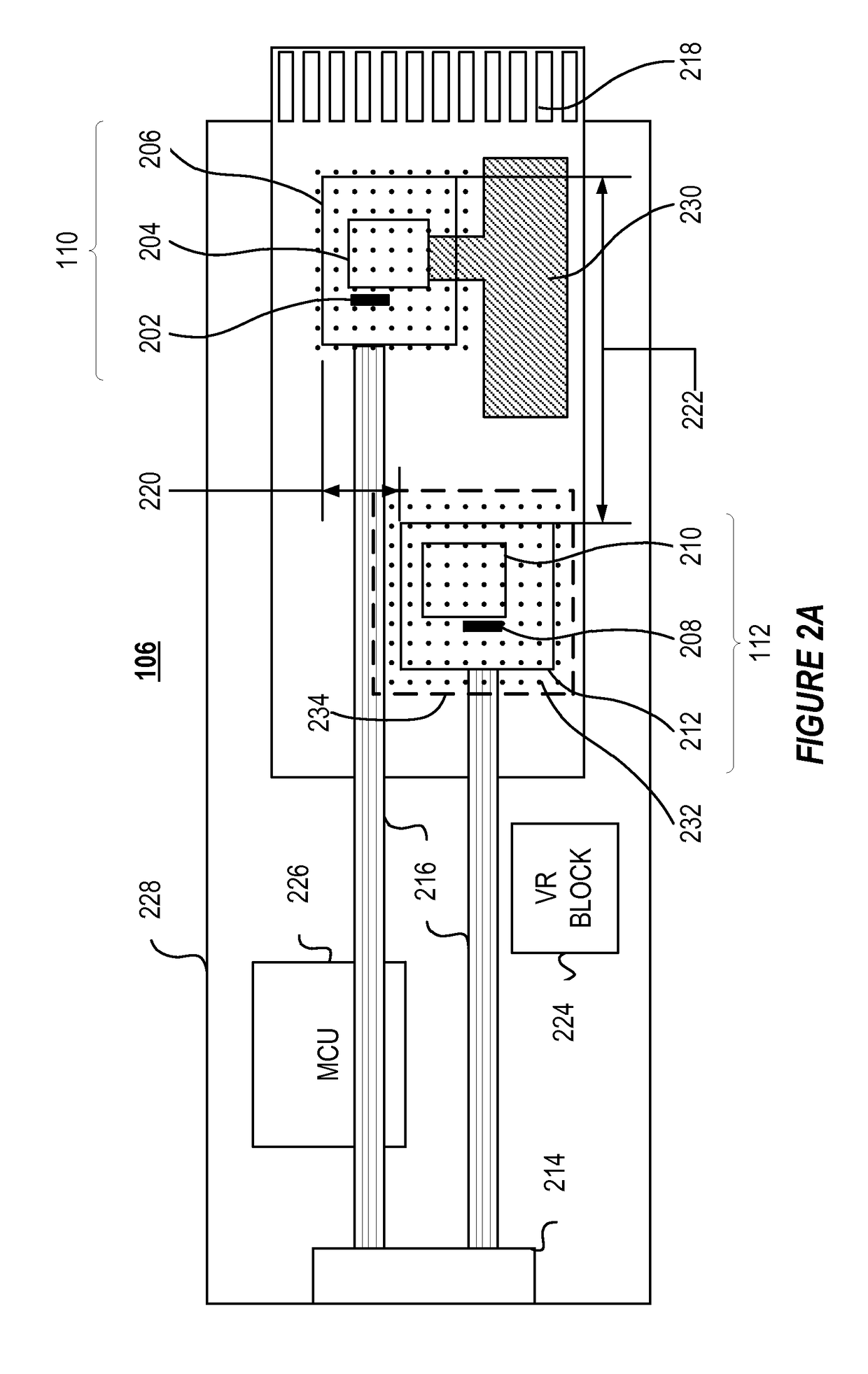Heat dissipation approach in chip on board assembly by using stacked copper microvias
a technology of stacked copper microvias and chip on board, which is applied in the direction of semiconductor lasers, printed circuit non-printed electric components association, instruments, etc., can solve the problem of increasing the power consumption of optical transceivers within the interconnected nodes
- Summary
- Abstract
- Description
- Claims
- Application Information
AI Technical Summary
Benefits of technology
Problems solved by technology
Method used
Image
Examples
Embodiment Construction
[0013]The various concepts introduced above and discussed in greater detail below may be implemented in any of numerous ways, as the described concepts are not limited to any particular manner of implementation. Examples of specific implementations and applications are provided primarily for illustrative purposes.
[0014]As an overview, as the data transfer rate of optical transceivers increases, the power required to operate the optical transceivers increases. The increase in power consumption can result in higher operating temperatures. Laser output can be impacted by temperature, and thus excessive operating temperatures can degrade transceiver performance. The present disclosure increases optical transceiver performance by reducing operating temperatures by placing a plurality of thermal microvias under the components of the optical transceiver. A standard printed circuit board is a poor conductor of thermal energy. Accordingly, the heat generated by the components of the optical ...
PUM
| Property | Measurement | Unit |
|---|---|---|
| diameter | aaaaa | aaaaa |
| diameter | aaaaa | aaaaa |
| diameter | aaaaa | aaaaa |
Abstract
Description
Claims
Application Information
 Login to View More
Login to View More - R&D
- Intellectual Property
- Life Sciences
- Materials
- Tech Scout
- Unparalleled Data Quality
- Higher Quality Content
- 60% Fewer Hallucinations
Browse by: Latest US Patents, China's latest patents, Technical Efficacy Thesaurus, Application Domain, Technology Topic, Popular Technical Reports.
© 2025 PatSnap. All rights reserved.Legal|Privacy policy|Modern Slavery Act Transparency Statement|Sitemap|About US| Contact US: help@patsnap.com



